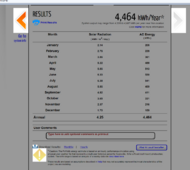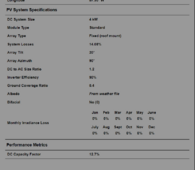I am a complete novice when it comes to solar. I live in western Kentucky. I am currently building a new garage and carport/patio area without access to electricity. This area gets about 7 -9 hours sun in the summer and about 3-4 in the winter. I have been trying to find out what I need to power this building but not having a lot of luck. What I have found is that I need a system somewhere between $1000 and $8000 and 2-10 solar panels with a 500-2000 watt inverter. See why I need help? I don't want a huge system but I also don't want it to be too small that may cause me to run out of power overnight.
I will have 6-8 LED lights, a garage door opener (used twice per day), maybe a ceiling fan or 2 (only used while sitting on patio), and some plugs for my pit boss smoker (use this maybe 2 times per month for about 6-10 each time). Maybe in the future I will get some small infrared heaters (again only used while sitting on patio) to extend my season.
As you can see there will be very little to no constant power usage except for possibly some LED Christmas lights for about a month or so. If I can in the future I'd like some security cameras but right now it's just what's listed above.
I would like to know where I can find out how many and what size panels I will need along with the other equipment (inverters, cables, switches, fuses, etc. ) along with how many and what size/kind of batteries I would need.
Thanks in advance for your help and I greatly appreciate it.
I will have 6-8 LED lights, a garage door opener (used twice per day), maybe a ceiling fan or 2 (only used while sitting on patio), and some plugs for my pit boss smoker (use this maybe 2 times per month for about 6-10 each time). Maybe in the future I will get some small infrared heaters (again only used while sitting on patio) to extend my season.
As you can see there will be very little to no constant power usage except for possibly some LED Christmas lights for about a month or so. If I can in the future I'd like some security cameras but right now it's just what's listed above.
I would like to know where I can find out how many and what size panels I will need along with the other equipment (inverters, cables, switches, fuses, etc. ) along with how many and what size/kind of batteries I would need.
Thanks in advance for your help and I greatly appreciate it.





